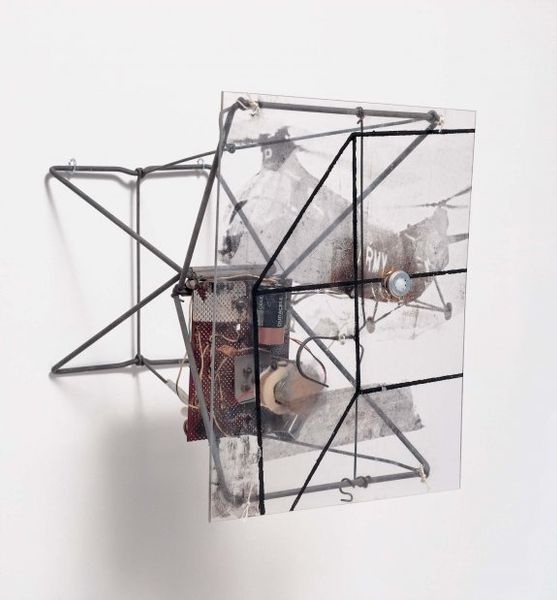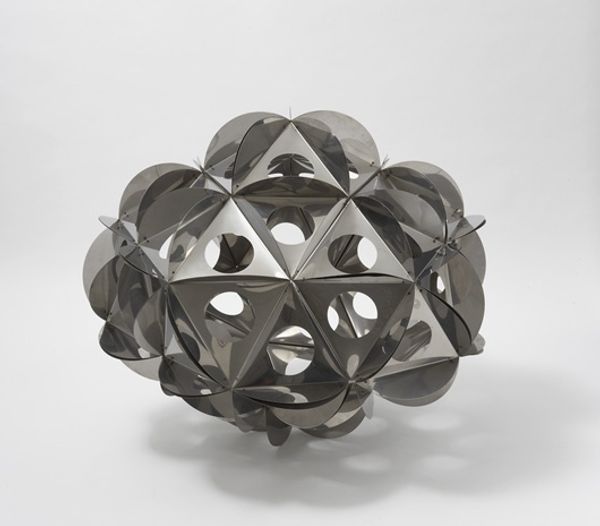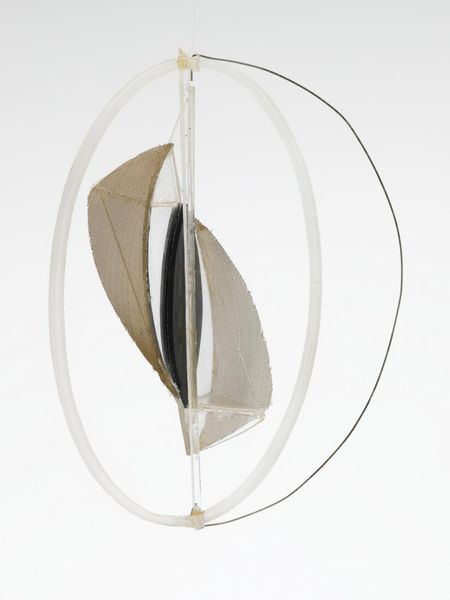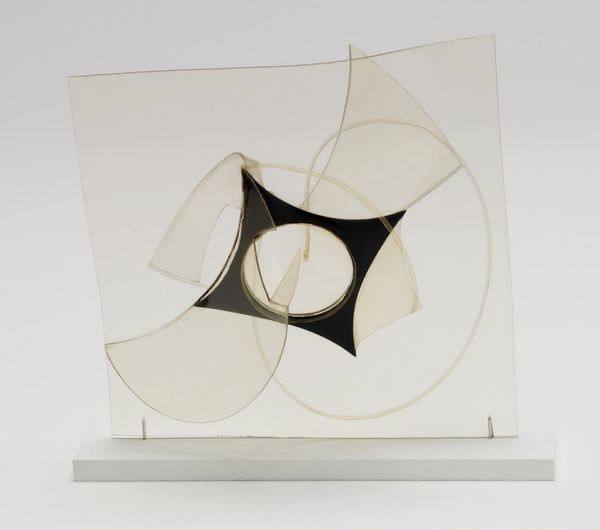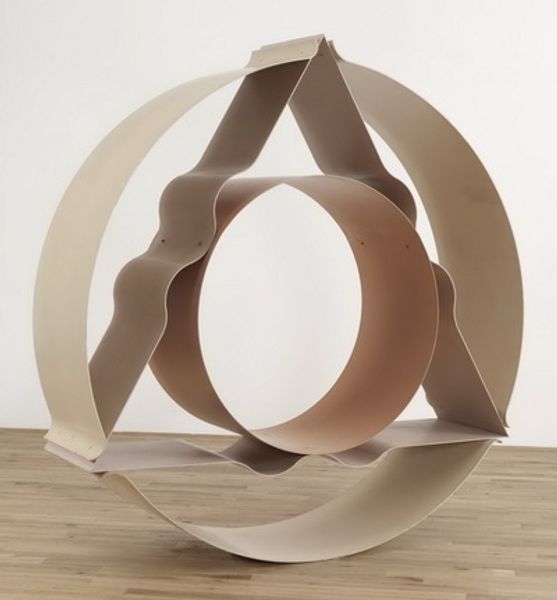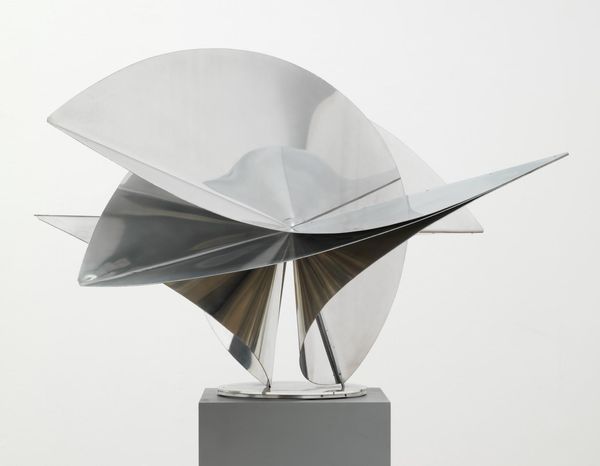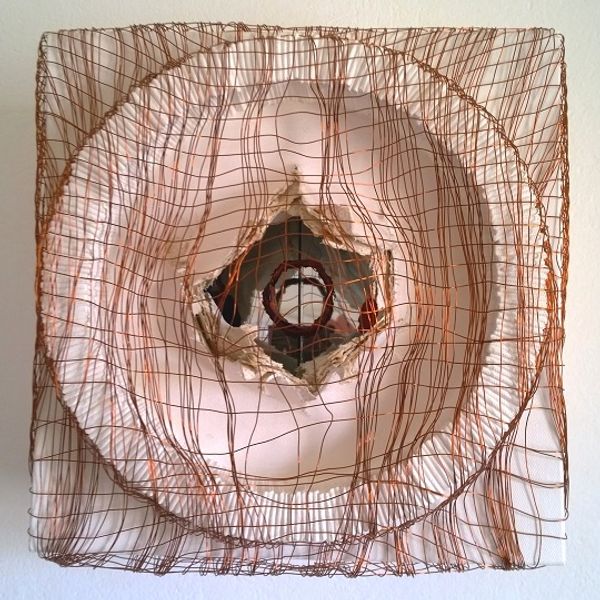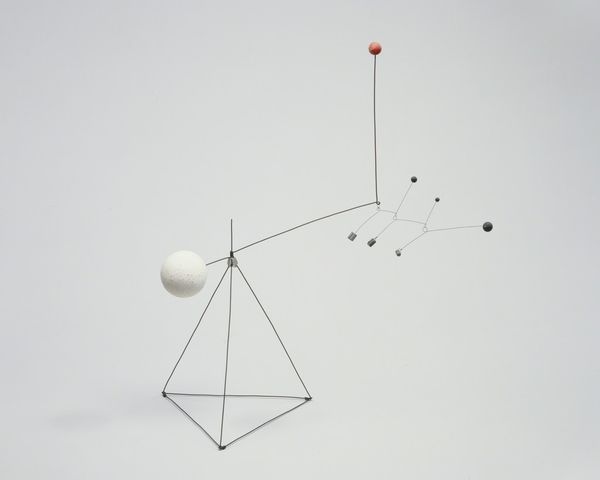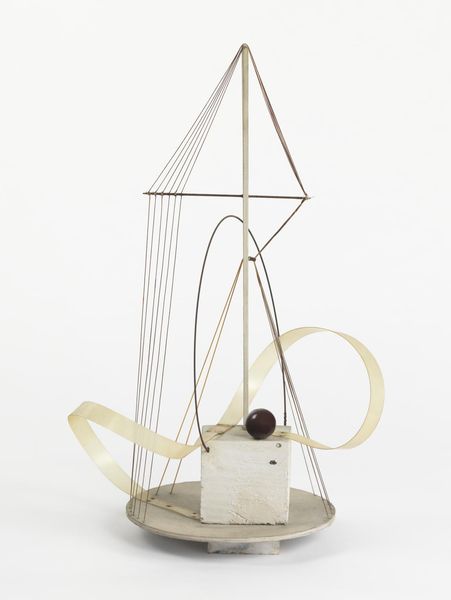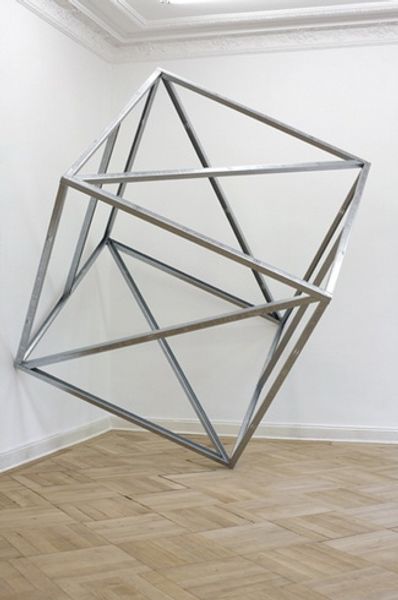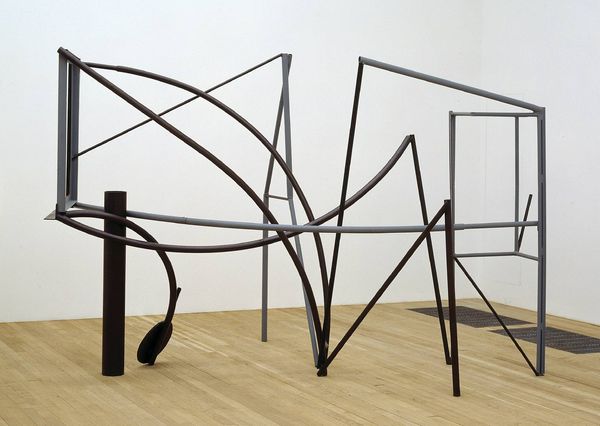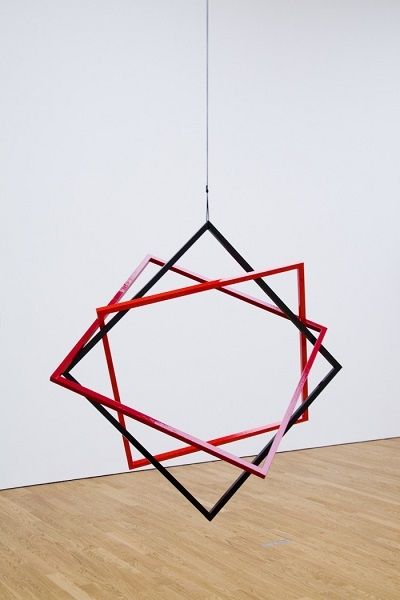
Maquette of a Monument Symbolising the Liberation of the Spirit 1952
0:00
0:00
Dimensions: object: 472 x 465 x 310 mm
Copyright: © ADAGP, Paris and DACS, London 2014 | CC-BY-NC-ND 4.0 DEED, Photo: Tate
Curator: Here at the Tate Modern, we're looking at Antoine Pevsner's "Maquette of a Monument Symbolising the Liberation of the Spirit". Editor: My first thought? A celestial tumbleweed, all airy grace and controlled chaos. It feels like a cage turned inside out. Curator: Pevsner, brother of fellow constructivist Naum Gabo, aimed to express modern ideas through industrial materials. The spiral form became very important to him. Editor: That spiral! It’s hypnotic. You could lose yourself in its delicate geometry. It's funny that such rigid lines give the feeling of soaring upwards. Curator: It's a testament to the utopian ideals of the Constructivist movement, to their vision of art transforming society after the Russian Revolution. Editor: A cage turned inside out. What would it feel like to build this, one line at a time? The liberation of the spirit, indeed... Curator: Pevsner’s work certainly invites us to think about art's role in envisioning freedom. Editor: Maybe freedom feels like escaping a cage. Maybe it feels like building one. Food for thought.
Comments
tatemodern 8 months ago
⋮
http://www.tate.org.uk/art/artworks/pevsner-maquette-of-a-monument-symbolising-the-liberation-of-the-spirit-n06162
Join the conversation
Join millions of artists and users on Artera today and experience the ultimate creative platform.
tatemodern 8 months ago
⋮
This is a model for a much larger work, Pevsner’s submission for an international sculpture competition. ‘The Unknown Political Prisoner’ was a monument commission organised by London’s Institute of Contemporary Arts in 1952. Pevsner constructed the intricate organic form entirely from straight elements. He sought to create an abstract monument with an architectural presence and geometric design that could be seen in its entirety from any direction. The repeated lines are ‘a symbol of imprisonment. The motive floating in the abyss of the sphere emphasises the image of captivity; it becomes materialised in the shape of a cell.’ Gallery label, March 2022
